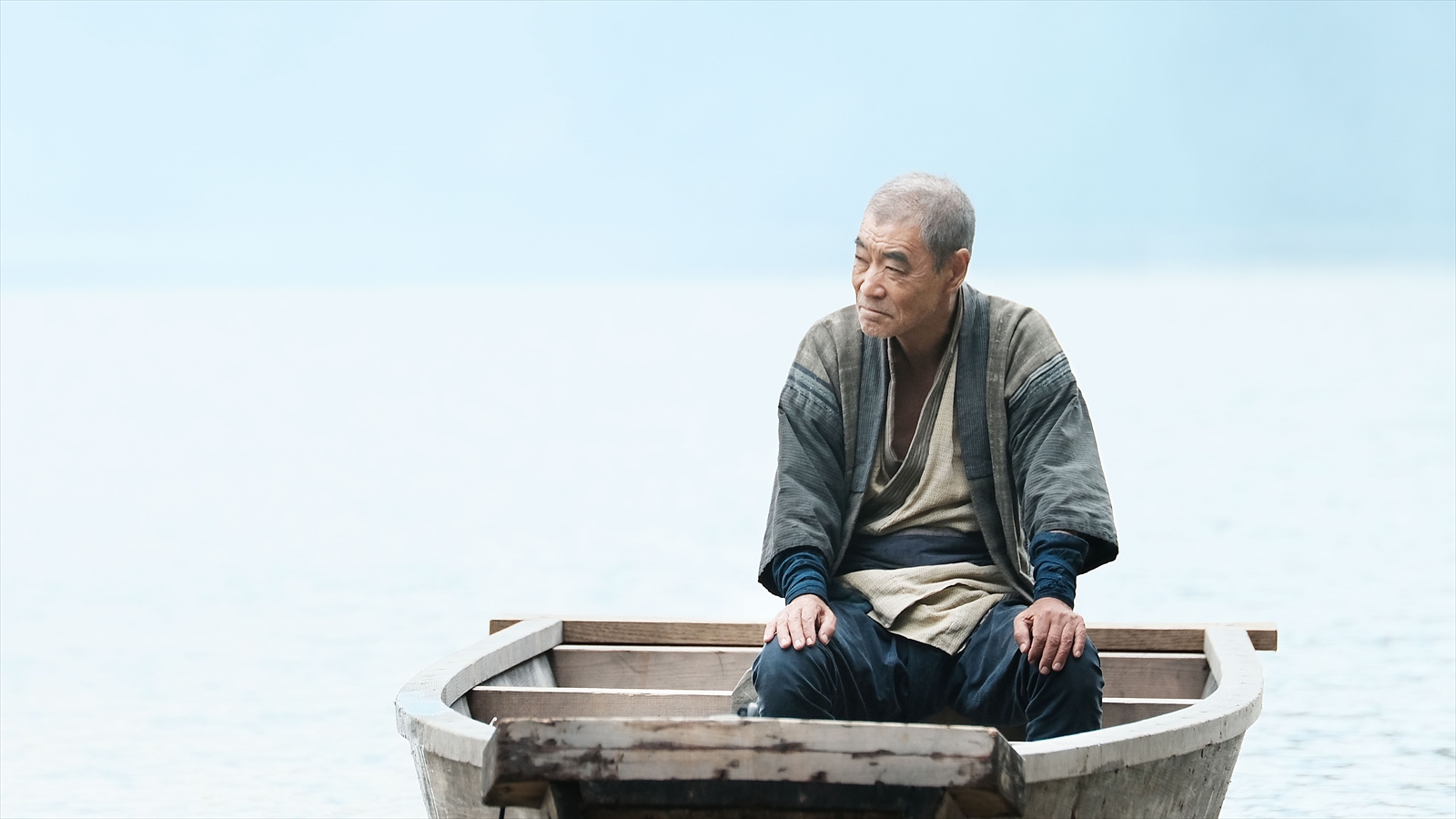Contributed movie reviews and interviews to the old Realtokyo site since 2005, and wrote columns such as “The neighborhood OL sits down on the edge” for the Hobo Nikkan Itoi Shinbun from 1998 to 2008. In 2009, she MCed a talk called “The micro, macro and future of movies” with directors Kiyoshi Kurosawa, Nobuhiro Suwa and Satoshi Miki. Became a writer after working at an airline company, an IT research facility and in the space industry. Currently part of the “Meguriai JAXA” team.
©2019 Production Committee “Aru sendou no hanashi”
This is one valuable answer for me
Joe Odagiri must have gone through countless trials before arriving at a point where he is able to offer “one valuable answer” that he found for himself. I met the director, whose first feature-length film “Aru sendou no hanashi” is competed, to ask him about his current state of mind. In our conversation, he revealed some episodes from the shootings with cinematographer Christopher Doyle, and with Akira Emoto, the leading actor in this movie. We also talked about such things as direction methods and script writing.
The protagonist in “Aru Sendou” is the boatman (“sendou” in Japanese) Toichi. He used to make a living as a ferryman on a river in the mountains, but when a bridge is constructed in the course of modernization, his mind begins to sway. One day, Toichi rescues an injured girl in the river – an experience that drags Toichi into the raging rapids of life. Doyle’s magical camera work, digging down to the roots of mankind by portraying the transformations of a person’s mind while making “fixed point observations” of a certain place, together with the warm texture of Emi Wada’s costumes, and the delicately entangled notes of Armenian jazz pianist Tigran Hamasyan, illustrate a mysteriously beautiful view of the world.
Also of note is the gorgeous cast. The co-starring Ririka Kawashima and Nijiro Murakami cut a brilliant figure next to Emoto, and in addition, there are some rather surprising appearances as well. When Odagiri started writing the script, his initial plan was to play Toichi as a man who gets left behind the times. In recent TV commercials, we have witnessed Odagiri’s impressive performance in the role of a frustrated man who can’t catch up with the contemporary cashless lifestyle. Coincidence?
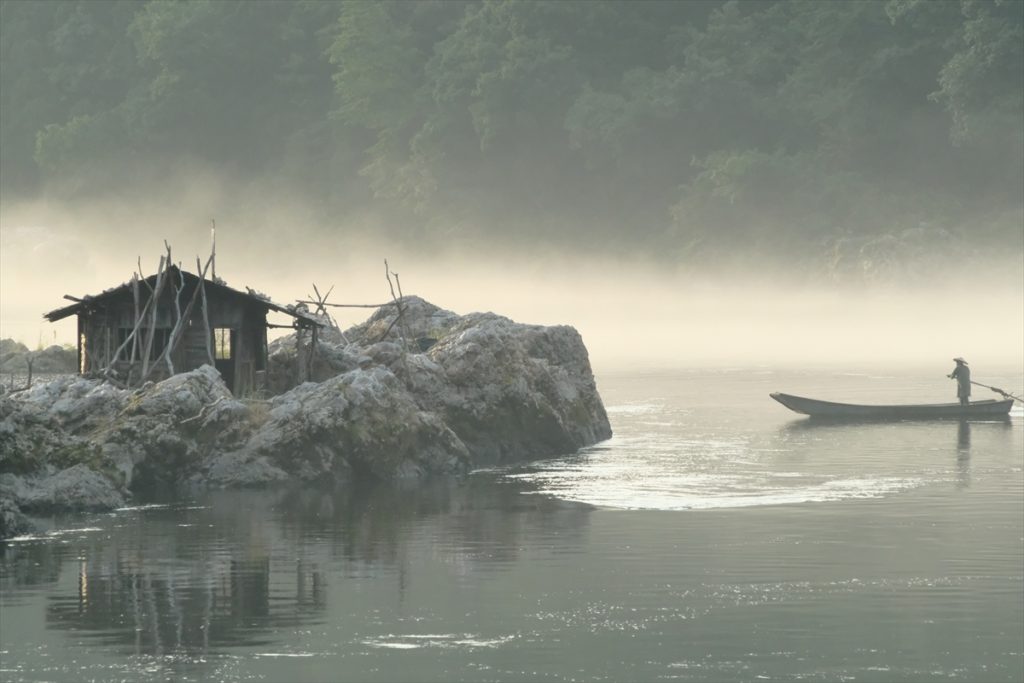
©2019 Production Committee “Aru sendou no hanashi”
ーNow that you have completed your long-awaited first feature film, how is the response?
The movie was in fact just completed this March, and at that point there’s no other option but to put it out as it is, because it’s too late to make any changes no matter what people say. Frankly speaking, my present state of mind is like, “grit your teeth and get to it.” I do think that I have found one valuable answer for myself, but how I get that across, and how people receive it, that’s something that every single viewer has to decide for themselves, and it’s in fact also something I’m at once looking forward to. On the other hand, looking back on my career as an actor, I never made compromises, but I always approached my work without loosing sight of what I really want to do, and it appears to me that this is what came out as a result. For me it’s a feeling of satisfaction of sorts, and I think that may be something that defies judgment as to whether it’s a success or failure.
ーThe visuals are overwhelmingly beautiful from beginning to end. Were there any arguments between you and Christopher Doyle with respect to shooting?
Not really. He trusted me, and he entirely devoted himself to supporting me. Cinematographers overseas are entitled to cut pictures in whatever way, and I heard that some don’t allow you to change the position of the camera, so I was prepared for all that, but as it turned out, things went totally differently. For everything from cuts to camera positions, Chris asked me what I was having in mind, and that attitude really made things a lot easier. Chris was the one who placed greatest importance on my views as to what kind of movie I wanted to make.
ーThis time it’s not that shaky “Doyle camera.” Was it like, you decided the position, and Christopher moved the camera around accordingly?
Yes. I told Chris that I wanted to do something like in those good old Japanese movies, where camera is mainly fixed and isn’t moved around much. He seemed to sense something in the expression “good old Japanese movies,” and he really liked the idea. Those were basically my own ideas, but as a matter of course, I got some ideas from Chris as well, so I think it was all quite well balanced. At the editing stage I realized for the first time that there was some really good material that Chris had shot when I wasn’t aware, so there are quite a few sequences in the movie that you can only make with Chris behind the camera. I think he is the key person when it comes to the visual aspect of this movie.

©2019 Production Committee “Aru sendou no hanashi”
ーHow was working with Akira Emoto? Was there anything you were particularly conscious about?
At one point somewhere in the middle of the shootings, he got really angry with me when I looked at the monitor during the shooting of a scene in a hut. I don’t want to blame Chris, but he sometimes does totally unexpected things when I’m not watching, so I looked at the monitor to check the situation. Mr. Emoto yelled at me, “The performance is here, not on the monitor!” From an actor’s point of view, directors who keep staring at the monitor create the impression that they are “more concerned about the picture than the performance,” which actors don’t like very much. I’d been painfully aware of that, but in the end he got angry with me nonetheless. From that point on, I tried hard to always monitor the acting from next to the camera. We never got into a situation where we would slacken or be lenient toward one another, and I think it was good that there was a certain sense of tension throughout the entire project.
ーYou chose Agamachi in Niigata as your location, and that place has a strange feeling to it, as if it were not in Japan but in another country.
You were also officially invited to the “Venice Days” competition at the Venice Film Festival, weren’t you?
When traveling around the various shooting locations also as an actor, it frequently happens that I find some genuine, untouched landscapes, and discover the magnificent beauty of nature, so I’m often amazed to see what kinds of places still exist in this country. In some countries there are deserts where it never snows and the mountains have the same color through the year. Imagining how life must be in such environments makes me realize how wonderful life in Japan is with all the seasonal changes and transformations, and I’d really like to share this with people from other countries. I think it’s quite meaningful to show this kind of movie abroad.
ーThe script is based on the rather heavy antithesis of “things that become useless and gradually disappear,” projected within the beauty of nature. Did you construct it this way, or was it a process in which all the experiences and things you have picked up at places around the world just naturally came flowing out?
I think the expression “things that soaked in came flowing out,” as you put it, is absolutely spot-on. I’m often writing my scripts late at night, and I forced myself to sit down in front of my computer and type in any case, even when I wasn’t prepared to write anything. In the ideal case, words would flow naturally, and I think the script as it turned out is the result of that. For every single line, the most desirable pattern is when you look at it once your hands have finished writing almost automatically, and say to yourself, “That’s a great line I just wrote!”
ーWas it difficult to mix elements of cruelty and hope in the last scene? Did you have an alternative ending in petto?
That scene was in fact one of the first that I wrote. As one method of scriptwriting, a university professor in America taught me to “start with the end when writing a story.”
ーScriptwriting, shooting and editing – which of the three was the hardest for you?
That’s definitely the shooting part. I like writing scripts, and the moment I finish writing is always the most joyful one for me. Maybe I’m happier in those moments than when the entire movie is done. (Laughs) The shooting is the most troublesome part, and then comes the editing, which I’m seeing as a task comparable to preparing a meal while sampling the ingredients. I’m a person who writes down everything, down to the tiniest detail, and I have in fact been told by a certain movie director who read my script that I was “writing too much,” because I’d already fixed everything in my descriptions of the scenes. In the worst case, I would even determine such things as camera positions.

©2019 Production Committee “Aru sendou no hanashi”
ーSo did you enjoy adapting to the circumstances at the respective shooting locations when translating your script into visuals?
I guess there are a variety of aspects that come into play, such as experience and resolution, and for myself, these things were troublesome rather than enjoyable. In a period of time when other filmmakers make ten movies, I made only this one. In other words, where others have ten players to field, I only had a single one, and my awareness of that situation gave me a lot of stress and pressure. I kept strangling myself for not being able to translate the script into visuals, just because I’m the one who wrote it.
ーAfter the first week of shooting, you got twenty mouth ulcers, and lost 5 kilos (according to the official programme interview). In that kind of situation, what gave you the motive power to continue?
Everyone in the staff and cast believed in me all the time, and they all gave me supportive pushes. Even when it got so painful that I felt like packing it all in, they all continued to believe in me and give me the power that I needed in order to fulfill my dream. I’m really thankful for that, and I do think that I have to give them something in return. But it would be no exaggeration to say it was only that.
ーDid you ever think about entrusting some other director with the movie?
I think there isn’t any other director who would have been ready to “pick it up and run with it.” (Forced smile) That’s particularly because it’s a movie that largely ignores business matters, which is exactly why I approached it with the idea that I was certainly the only one who could finish this movie. However I do think that “it didn’t have to be that challenging after all.” If I’m going to make another film, I think I’m going to be more careful in this respect. (Laughs)
ーWas there any intention to star in your own movie? Or is there a character into which you projected yourself?
Considering the task of directing a movie, I think that doesn’t leave any room for such things, so I didn’t think at all about taking over a role myself. It is true through that my initial idea when writing the script was to play Toichi myself, so I guess Toichi is the character that’s the closest to myself. (Thinks for a while) But the one character that doesn’tchange throughout in the movie is Nihei (Masatoshi Nagase), so I also think that I might be a similar kind of person. Well, I’m definitely not like Genzo (Nijiro Murakami). (Laughs)
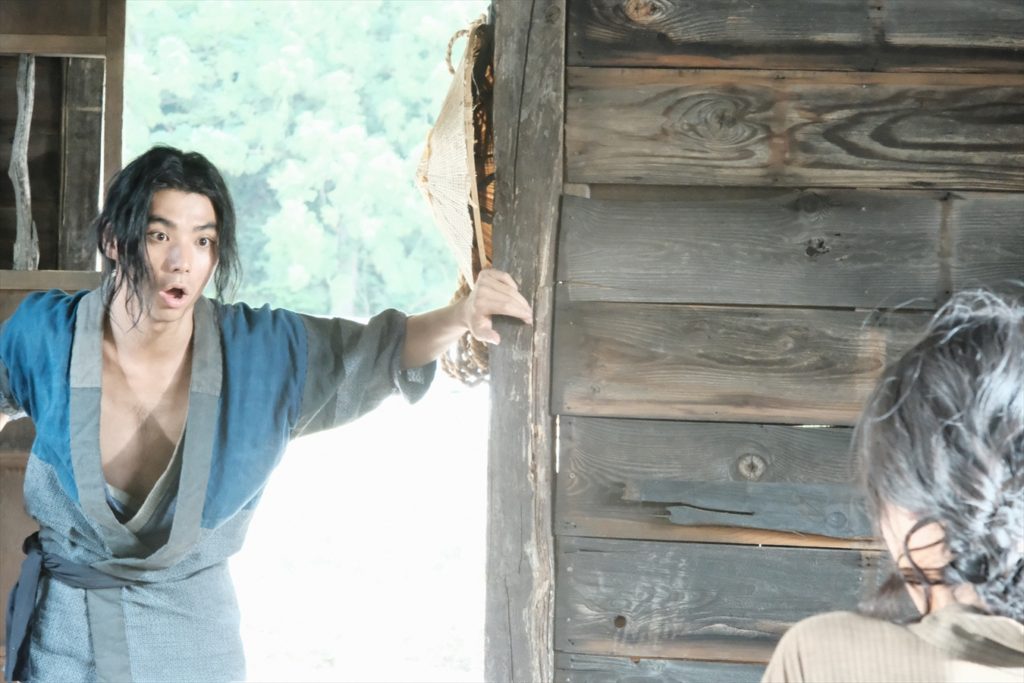
©2019 Production Committee “Aru sendou no hanashi”
ーGenzo is a slightly comical character. What kinds of instructions did you give Nijiro Murakami?
With regard to everything from timing to nuances, I gave him a lot of very detailed advice, and we kept reshooting scenes. There’s a unique kind of difficulty involved in making things funny. It doesn’t get funny when you don’t do enough, but when you exaggerate, it’s not funny either. When you want to incorporate all this in a human drama kind of setting, that seems to make it all the more difficult.
ーYou also directed the performance of Ririka Kawashima, whom you chose in an audition, from the beginning, didn’t you?
With Ms. Kawashima, we did lessons for several months in which I suggested to her to think of her body as a musical instrument, for example, and then learn how and what kinds of sounds she can play on it. We didn’t practice her lines at all during that time, but it was all about honing her senses and heightening her sensitivity, and feeling the effects of stimulation. I also think I taught her some very subtle things, such as how to prepare herself for working with the script on location, how to present herself when receiving concrete directions. She eventually came up with some excellent answers, and I think she is a brilliant actress with a promising future.
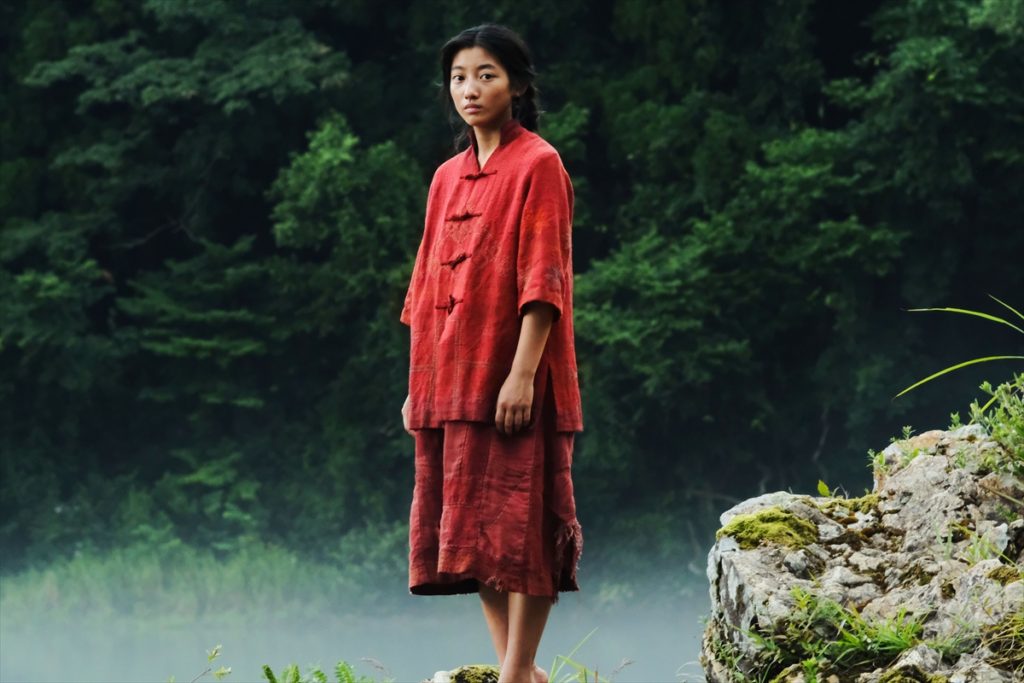
©2019 Production Committee “Aru sendou no hanashi”
ーIn 2014 you appeared together with late Shintaro Katsu in the ”Last Days” NHK documentary program, where you seconded Katsu’s remark that “we must continue our challenges in experiments and adventures.” Was this movie for you a challenge – an experiment and an adventure?
I think it would be quite meaningless if I did something risk-free. A director who’s good at teenager movies should do teenager movies, but when I started thinking about what kind of movie I should do, I realized that there’s no particular genre in which I’m at home, so I think I can only compete when I try and throw in some challenges. The script for this movie itself was a challenge, and such things as leaving settings mostly untouched, and a story that doesn’t go anywhere, are perhaps minus points in cinematic terms. But I thought that, if I don’t accept the challenge to try and see how I can make a movie out of that, it wouldn’t make sense for me to make any more movies in the future. In that sense, it turned out to be a great adventure, and that’s exactly why “strangling myself” is perhaps the expression that comes closest to how I felt during the making.
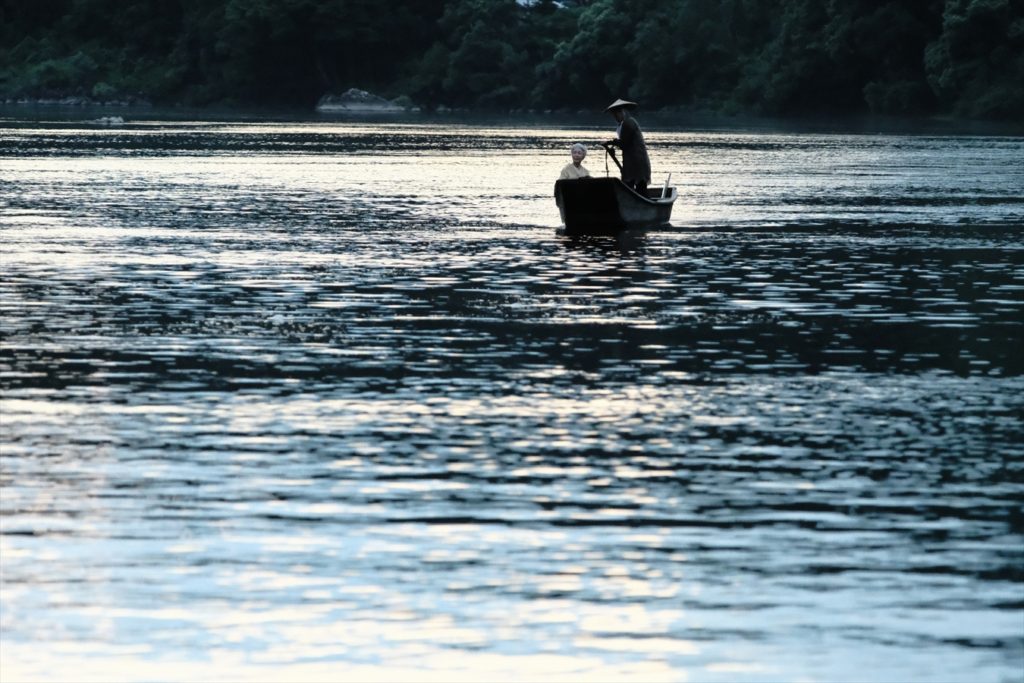
©2019 Production Committee “Aru sendou no hanashi”
In these comments, Odagiri shares his expansive, earth-conscious views from the perspective of an actor who keeps operating on the international stage. His movie tells enigmatic stories about a rumored murder, a mysterious young man, and an injured girl. Akira Emoto’s acting is superior, the collaboration between Odagiri’s direction and Doyle’s skillful camera work is marvelous, and the music of Tigran Hamasyan is gently intriguing. The movie is introduced as “an ambitious work that took ten years to make,” with a top-class cast and staff. Personally, I’m already looking forward to the next one.
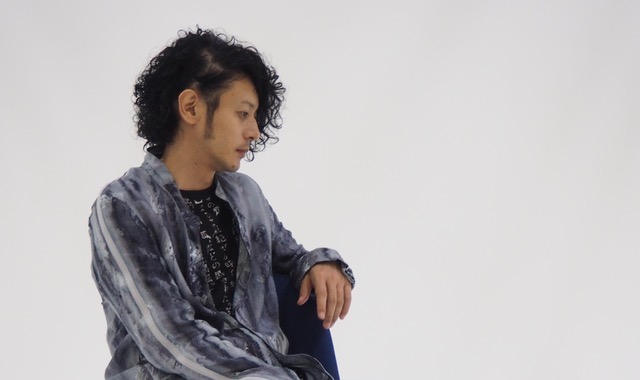
©MasayoFukushima
Joe Odagiri
Born February 16, 1976 in Okayama. Studied method acting in the USA and Japan, and made his debut as a movie actor in “Akarui mirai” (directed by Kiyoshi Kurosawa), which participated in the Cannes International Film Festival’s competition in 2003. He went on to receive numerous national and international awards, including the Japan Academy Film Prize and Blue Ribbon Award among others, and star in a number of foreign movies. “Yoiyami shinju” (original title “The White Girl”) by Jenny Suen/Christopher Doyle was unveiled in 2019, while “Saturday Fiction” (directed by Lou Ye) and “Inkan, gongkan, sikan grigo inkan (directed by Kim Ki-duk) are yet to be completed. Previous works as a director include “Banana no kawa,” “Fairy in Method” (both self-produced short films), and the medium-length film “Sakura na hitotachi” (2009), which was invited to the 38th International Film Festival Rotterdam in the same year. In volume 8 of the TV Asahi series “Kaette kita jiko keisatsu” (2007), Odagiri was involved as scriptwriter, director and actor at the same time. Later in 2019, the “Jiko keisatsu” series returns after a 12-year hiatus under the new title “Jiko keisatsu hajimemashita.”
INFORMATION
Aru sendou no hanashi (They Say Nothing Stays the Same)
Written and direction: Joe Odagiri
Cinematographer: Christopher Doyle
Costume design: Wada Emi
Music: Tigran Hamasyan
Distributor: kino films/KINOSHITA GROUP
©2019 Production Committee "Aru sendou no hanashi"


